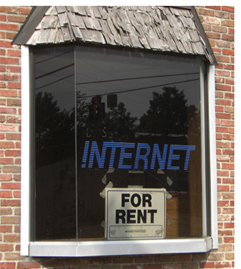I’ve discussed the importance of customer communities to innovation, customer experience, and customer dialogue as an antidote to self-orientation by companies. David Weinberger recently posted about the Community 2.0 conference, pointing out the Starbucks suggestion box as a good example of customer community. David also pointed approvingly to the arms-length participation of Tivo in the independent forum, TivoCommunity.com, speaking to the point that communities of customers often form on their own.
Coincidentally, I received an email recently soliciting me to join a community of Best Buy customers. I’m not an especially enthusiastic customer of Best Buy, but since CompUSA closed its doors in St. Louis, most of my electronic purchases are at Best Buy. The first thing I took note of in the invitation was its blatant point that Best Buy is selecting members for its community. The email stated:
If you are selected to join the online community, you will discuss and share opinions on a variety of topics, react to questions posed by Best Buy and provide insight into your lifestyle. In addition, you will build rewarding friendships with other members, and receive periodic rewards in exchange for your participation. This is a unique opportunity for you to share your thoughts and ideas with Best Buy – only about three hundred people will be chosen.
To see if you qualify, please click on the link below to complete a 10-minute questionnaire.
The email solicitation sparked my curiosity and I clicked on the links to check out the survey it requires you to complete before learning whether you qualify. At the end of a lengthy sequence of questions, I learned that I just don’t fit into their community plans. Probably because I didn’t answer all the questions, such as what is your family income and other fairly personal items. It seems obvious to me that Best Buy doesn’t really want a community. Rather, they are selecting people for the equivalent of an online focus group representing one marketing segment. I’d suggest Best Buy rethink its strategy.
Share this post…
 :
:  :
:  :
:  :
:  :
:  :
:  :
:  :
:  :
:  :
: 



 Posted by Larry Irons
Posted by Larry Irons  Ross Mayfield of SocialText recently pointed to a longstanding issue involving the relationship of organizational practices and organizational processes. He offered a discussion of
Ross Mayfield of SocialText recently pointed to a longstanding issue involving the relationship of organizational practices and organizational processes. He offered a discussion of 











